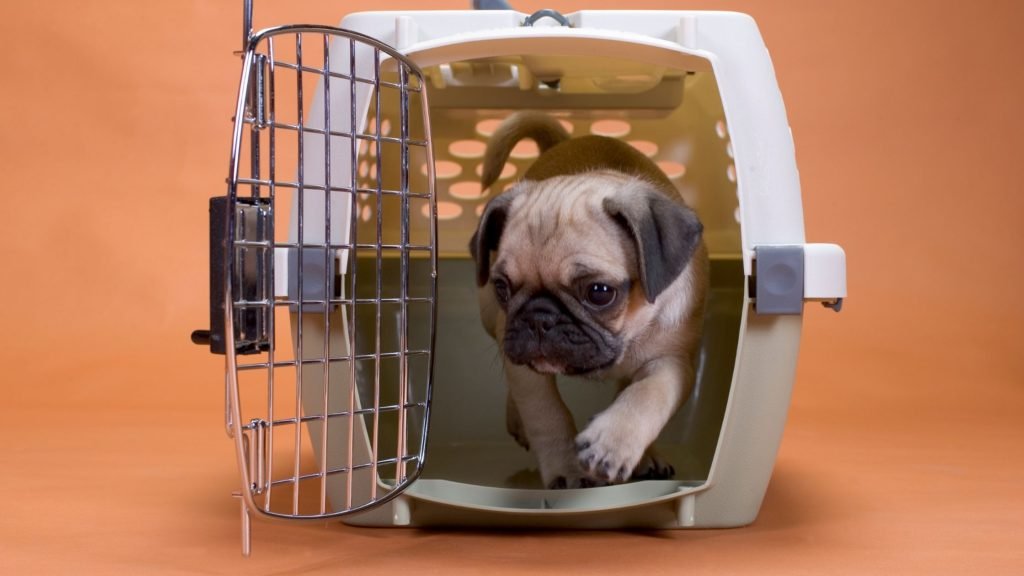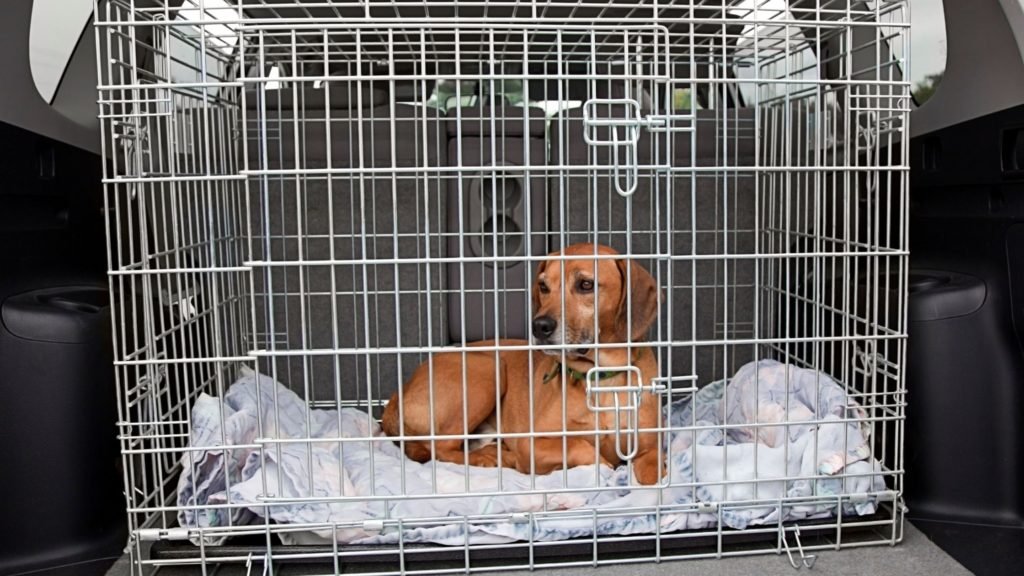As a new pet owner, you might be overwhelmed by the number of things you need to learn about puppy care. One of the questions that could be crossing your mind right now could be: “Is crate training good for puppies?” It’s a topic that receives mixed responses from pet owners, trainers, and animal behaviorists. This article aims to help you navigate this discussion, providing evidence-based insights and helping you make the right decision for your puppy’s well-being.
Understanding Crate Training for Puppies
Crate training teaches a puppy to accept a crate or cage as a safe and familiar place. This method is often used as part of the house-training process and can also be a means to ensure the puppy’s safety when the owner is not available to supervise.
Before we delve into the details, it’s essential to clarify that crate training should never be used to punish your furry friend. Misuse of the crate can lead to adverse psychological effects and not represent the training’s intended purpose.

The Controversy Around Crate Training
Is crate training good for puppies, or is it cruel? This question often arises among new pet owners. Many people are against crate training, viewing it as an unfair form of confinement. On the other hand, advocates argue that crates can mimic the den-like environment dogs naturally seek for comfort and security.
What does the science say about crate training? And what are the pros and cons of crate training? Let’s find out.
The Science Behind Crate Training
Canines, like their wolf ancestors, are naturally denning animals. In the wild, a dog’s den is their home—a place to sleep, hide from danger, and raise a family. This instinct is still strong in puppies. When correctly implemented, crate training works with your puppy’s instincts.
There’s a wide range of research on the topic, which we’ll delve into next. But first, let’s explore the benefits of crate-training puppies.
Benefits of Crate Training Puppies
- Safety: One of the key advantages of crate training is ensuring the puppy’s safety. Puppies are naturally curious and can get into dangerous situations when unsupervised. A crate provides a secure space where the puppy can stay when you are not around to monitor them.
- House Training: Crate training can benefit house training because puppies naturally avoid soiling their sleeping areas. They will learn to hold it until you take them outside, teaching them where it’s appropriate to eliminate it.
- Travel: Traveling with a puppy can be challenging, but a well-crate-trained puppy will feel more comfortable and safe during car rides or trips to the vet.
Remember, the objective of crate training should be to create a positive association for your puppy. It should be a refuge, not a prison. Now, let’s discuss some of the different crate training methods for puppies.

Crate Training Methods for Puppies
The first step in crate training is to make the crate a comfortable and appealing place for your puppy. Put soft bedding and favorite toys inside, and ensure the crate is in a quiet, traffic-free area so your puppy feels secure. There are different approaches to crate training, and it’s important to find a method that works best for you and your puppy.
- Gradual Introduction: Let your puppy explore the crate at their own pace. Leave the door open, put treats or toys inside, and let them get used to going in and out freely.
- Meal Times: Begin feeding your puppy their meals inside the crate. This creates a positive association with the crate.
- Increasing Time: After your puppy is comfortable eating in the crate, you can close the door while they eat and gradually increase the time the door is closed after they’ve finished eating.
- Overnight Crate Training: Place the crate in your bedroom or near your sleep area. This can help alleviate any separation anxiety.
- Alone Time: Once your puppy is comfortable spending time in the crate, you can leave them alone for short periods. Start with a few minutes and gradually increase the duration.
Remember, patience and consistency are key to successful crate training. It’s also important to ensure you choose the right size crate for your puppy.
Choosing the Right Crate
Your puppy’s crate should be large enough to stand, turn around, and lie comfortably. However, it should be a manageable size that they could use one corner as a bathroom and the rest of the space for sleeping. If you have a large breed puppy, consider a crate with dividers that can be adjusted as your puppy grows.
Positive Crate Training for Puppies
Making crate training a positive experience for your puppy is essential. The crate should always be associated with something pleasant and should never be used as a place of punishment. Encourage your puppy to enter the crate by placing treats and favorite toys inside. Praise your puppy when they go inside the crate, and spend time near it while your puppy is inside to make them feel more comfortable.
Now that we understand the benefits and techniques of crate training, it’s also crucial to consider some potential downsides. This brings us to the question: “Is crate training good for puppies, always?” Let’s examine some possible concerns.
The Potential Downsides of Crate Training
Like any training method, crate training has its potential drawbacks. The key lies in the implementation and knowing when better choices might occur.
- Overuse: Overuse of the crate can lead to physical and mental health issues in puppies. Puppies need plenty of exercise and social interaction, so they shouldn’t be left in a crate for long periods.
- Anxiety: Some puppies may feel anxious or stressed in a crate. Suppose your puppy shows signs of distress while in the crate.
- Inappropriate Use: Using the crate as punishment will make your puppy fear it, and they will no longer see it as a safe place.
- Accidents: Young puppies have small bladders and may be unable to hold their bladder for the entire night. If forced to do so, it can lead to urinary health problems.
While these potential issues can be concerning, how crate training is carried out can significantly impact whether these become a problem.
Addressing Crate Training Challenges
A well-executed crate training can mitigate most potential drawbacks. Here are some recommendations on how to avoid or address these issues:
- Preventing Overuse: Be sure to give your puppy plenty of playtime and interaction with you outside of the crate. Puppies also need lots of exercise to expend their energy and stay healthy.
- Reducing Anxiety: If your puppy seems overly stressed or anxious about being in the crate, it may be helpful to slow down the training process. Additionally, creating a comfortable environment inside the crate, providing toys and treats, and spending time near it can help reduce their anxiety.
- Avoiding Misuse: Never use the crate as a form of punishment. This can create fear and anxiety for your puppy, making crate training more difficult.
- Avoiding Accidents: Plan your puppy’s meal times and toilet breaks appropriately. Young puppies need to relieve themselves often, so it’s important to give them opportunities to do so.

Crate Training and Puppy Behavior
Crate training can also influence puppy behavior, for better or worse. It’s crucial to note that the crate is not a solution to behavioral problems. If a puppy acts out because of boredom or lack of exercise, being in a crate for extended periods will likely exacerbate these behaviors. On the other hand, a crate can be useful in curbing unwanted behaviors, such as destructive chewing, as long as it is part of a broader training and socialization program.
Puppy Behavior and Crate Training
Proper crate training can also help manage certain puppy behaviors:
- Preventing Destructive Behaviors: A crate can provide a safe and secure environment for your puppy when it can’t be supervised, preventing them from chewing on inappropriate items.
- Encouraging Calm Behavior: A crate can act as a calm and quiet place for your puppy to relax and sleep, encouraging calm behavior.
- Easing Transition Periods: A crate can provide a familiar and secure environment for your puppy during transitions or changes to its routine.
- Supporting House Training: A crate can be a valuable tool for puppy training, as most dogs naturally avoid soiling their sleeping areas.
The key to crate training is to ensure it’s a positive experience for your puppy and used as part of a balanced training and socialization program.
In the final part of this article, we’ll answer some of the most frequently asked questions about crate training, shedding further light on “Is crate training good for puppies?” Stay tuned.
Conclusion
To conclude, crate training can be good for puppies when done correctly. It can provide them a safe, secure environment and be a valuable tool in house training. However, crate training is only suitable for some puppies, and it should never be used to avoid giving your puppy the time, training, and socialization they need.
Is crate training good for puppies? As with many things, the answer depends on the individual puppy and the methods used. It can be a beneficial tool, but it’s essential to understand and apply it correctly.
FAQs About Crate Training Puppies
To further clarify the concept and its benefits, let’s tackle some frequently asked questions about crate training:
Is It Cruel to Crate Train a Puppy?
A: Crate training itself is not cruel. When used correctly, a crate can be a safe space where your puppy can retreat for peace and relaxation. However, prolonged periods in a crate, using the crate as a punishment, or ignoring a puppy’s physical and emotional needs can be harmful.
How Long to Crate Train a Puppy?
A: The duration of crate training can vary depending on the puppy’s age, personality, previous experiences, and how consistently the training process is followed. For some puppies, it can be weeks; for others, it might take several months.
Can Crate Training Help with Separation Anxiety?
A: While crates can provide a safe and secure space, they’re not a cure for separation anxiety. Puppies with separation anxiety often become more distressed when confined. If your puppy shows signs of separation anxiety, it’s important to consult with a professional behaviorist or trainer.
What Size Crate Is Best for My Puppy?
A: The crate should be large enough for your puppy to stand up, turn around, and lie comfortably. However, if the crate is too large, your puppy might use one end as a bathroom and the other as a sleeping area, which could hinder house training.
Are There Alternatives to Crate Training?
A: There are alternatives, like using baby gates to confine your puppy to a puppy-proofed area or room. Some people also find success with puppy playpens.
The journey of crate training can be rewarding for you and your puppy, leading to a well-adjusted and content pet. Remember, the process takes time, patience, and consistency. With a well-planned crate training regimen, you’ll be well on your way to confidently answering, “Is crate training good for puppies?” Yes, indeed, when done correctly.
Related Articles

Are Lhasa Apsos Hard to Train? Debunking Myths
When choosing a pet, one of

Are Basset Hounds Hyper? Debating the Energy Levels
When people think about getting a

Uncover your dog breed based on your zodiac sign
Were you looking for the perfect

Master the Art of Force Free Dog Training: A Full Guide
Discover the benefits of force-free dog

My dog will only eat human food: 9 Frequently Asked Questions
My dog will only eat human

The Crate Whisperer: Brandon McMillan’s Secrets to Success
Brandon McMillan is a well-known dog

